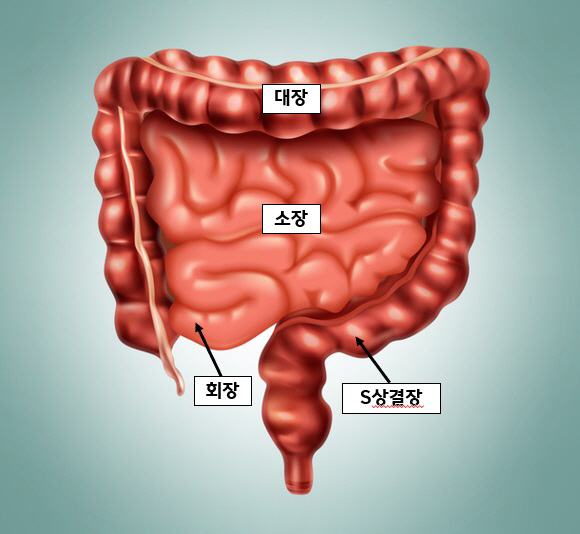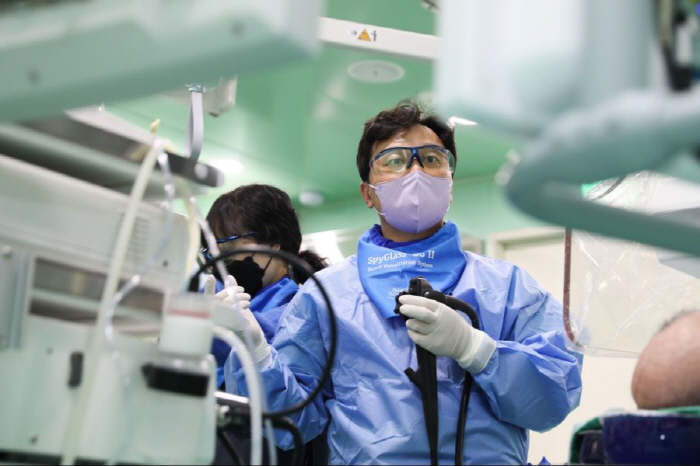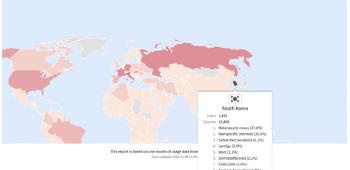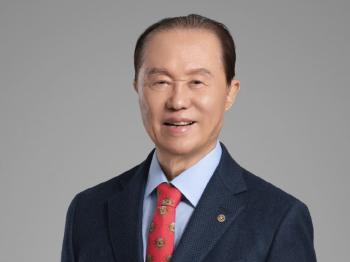Hallym University Dongdong Elastic Heart Hospital succeeded in connecting the ileum colon under the guidance of ultrasound endoscopy for the first terminal cancer patient in Korea
May 22, 2025
|
This procedure is a high-level endoscopic procedure that creates a detour by installing a stent connecting the small and large intestine to a patient whose small intestine is closed. Success stories are rare around the world, and Professor Park Se-woo has succeeded in connecting the ileum colon under ultrasound endoscopy three times until recently.
Lee (female, 52) who underwent the procedure in October 2023 visited Hallym University Dongtan Sacred Heart Hospital due to frequent pain and vomiting after undergoing partial gastrectomy for gastric cancer three years ago. CT scans revealed that cancer recurred and cancer cells metastasized to the peritoneum and were diagnosed as peritoneal carcinoma, which invaded several organs, and the ileum, the distal part of the small intestine, was blocked by a tumor. As a result, the digested contents could not escape and pain and vomiting were repeated.
Professor Park Se-woo tried to install a stent in the stricture area through colonoscopy, but it was not accessible due to severe stenosis. In addition, surgery was difficult because the patient's physical condition was not good.
In response, Park decided to connect the S-shaped colon, which is the distal part of the large intestine, and the ileum, which is the distal part of the small intestine, to create a detour where food and digestive fluids can pass. He first inserted a guide line after puncture with a fine needle using an ultrasound endoscopy from the colon to the ileum. After that, a new detour was created by inserting a lumen application metal stent that can be inserted with a puncture at the same time while applying a current along the guide line. It was a high-level procedure that required very precise stent installation because if intestinal contents were leaked due to perforation, peritonitis could put the patient's life in danger.
Professor Park successfully completed the procedure, and Lee's vomit and pain disappeared as the blocked contents circulated smoothly and no side effects occurred.
The results of this high-level procedure are titled 'Endoscopical ultrasound-guided ileocecal connection using a novel lumen-applying metal stent for small-bowel carcinoma)' which is the most influential SCIE-class international journal in the endoscopy field under the title of 'Endoscopic ultrasound-guided ileocecal connection (IF: 11.5)'
Professor Park later succeeded in connecting the ileal colon to two patients with obstruction of the small intestine under the guidance of ultrasound endoscopy with more advanced techniques. After the procedure, patients were able to eat orally and maintained the existing treatment. In particular, the patient who underwent the most recent procedure had another small intestine obstruction in the central part of the small intestine (proximal ileum) after performing an ultrasound-guided ileocecal connection. Therefore, a colonoscopy was inserted into the center of the ileum using the previously made ileal colon connection passage, and a small intestine stent insertion was performed.
Professor Park Se-woo said "Under the guidance of ultrasound endoscopy, ileocecal connection can safely and quickly treat intestinal obstruction in patients with small intestine obstruction who have difficulty in surgery."Patients with peritoneal carcinoma whose cancer cells have spread to the peritoneum suffer from severe abdominal pain, nausea and vomiting, and abdominal distention due to malignant intestinal obstruction, and we will strive to develop techniques and tools for ileocecal connection under ultrasound endoscopy so that these patients can get out of pain."
Professor Park added, "However, this ultrasound-guided ileocecal connection is not applicable to all small intestine obstruction patients and is selectively possible depending on the anatomical structure of obstruction or the patient's systemic condition."
Meanwhile, Professor Park Se-woo is currently the most active in Korea in various high-level ultrasound endoscopy interventions such as gallbladder drainage, bile duct drainage, pancreatic duct drainage, and endoscopic necrosis removal under ultrasound endoscopy, and reports the most papers related to this.
|
This article was translated by Naver AI translator.















